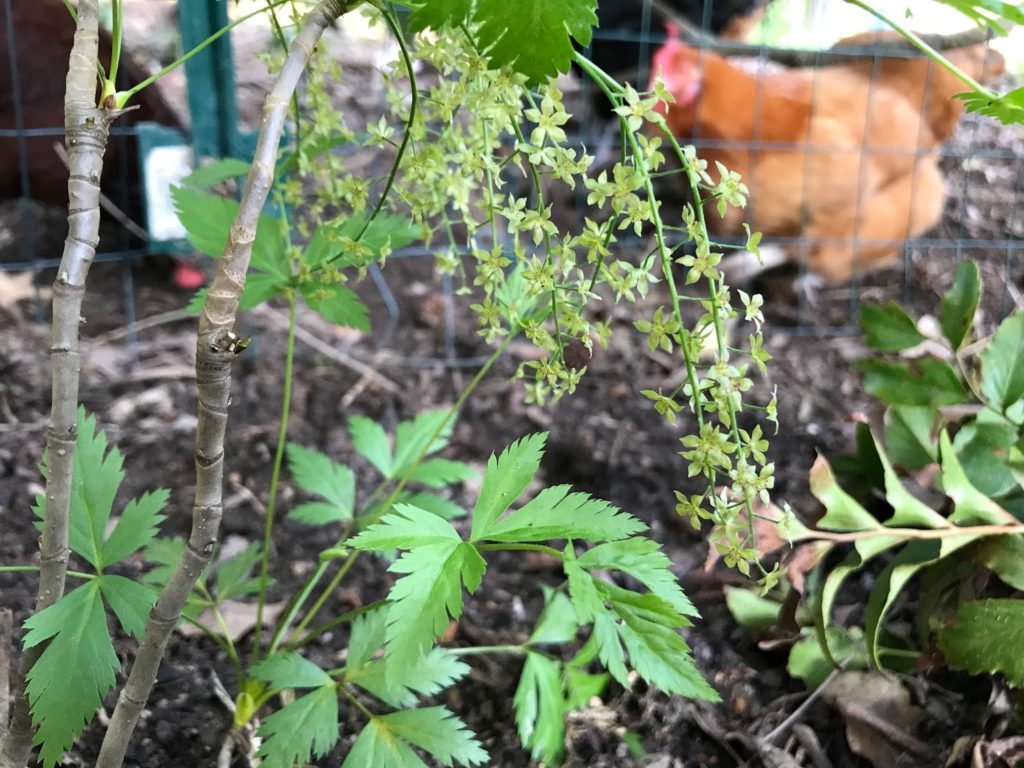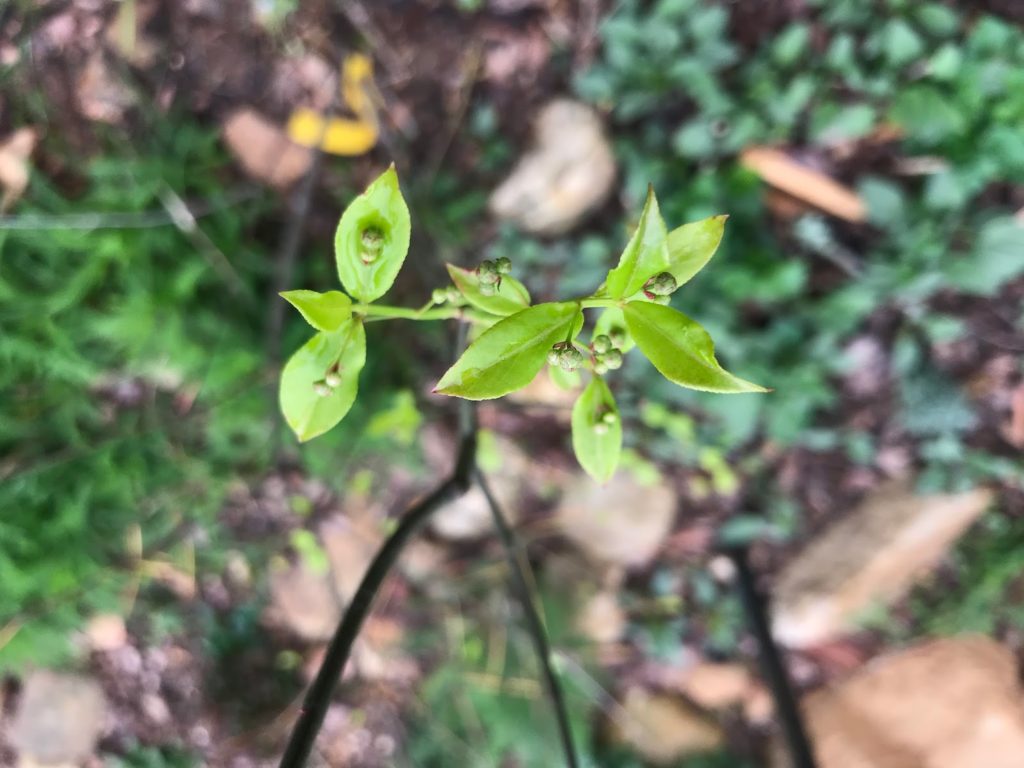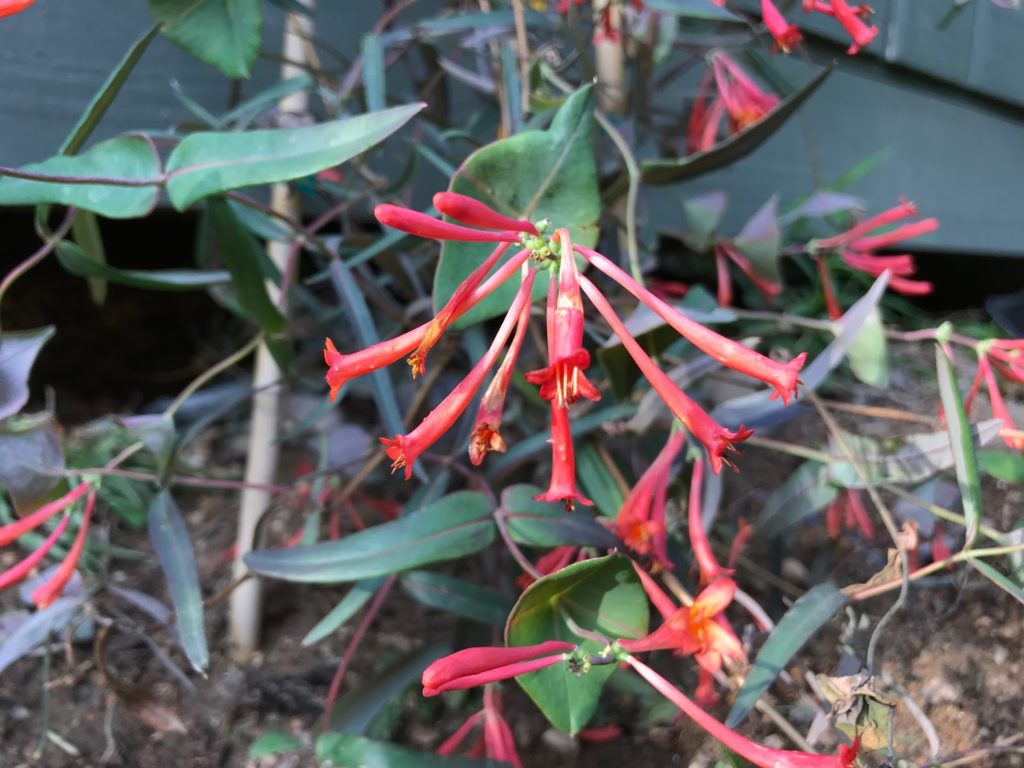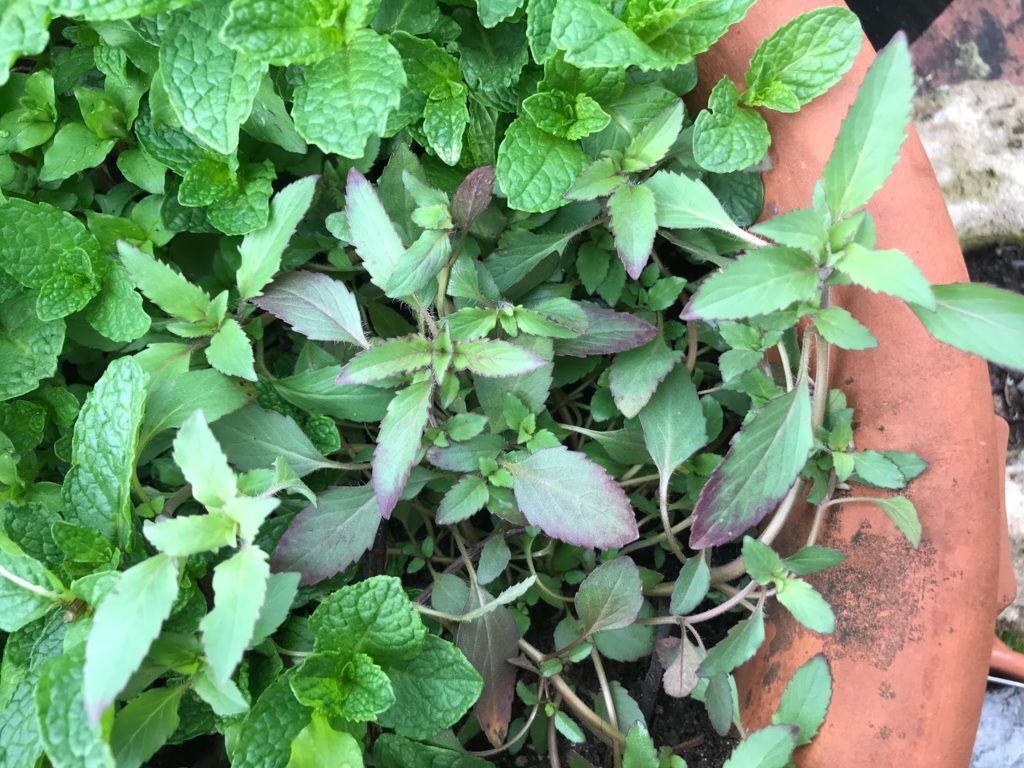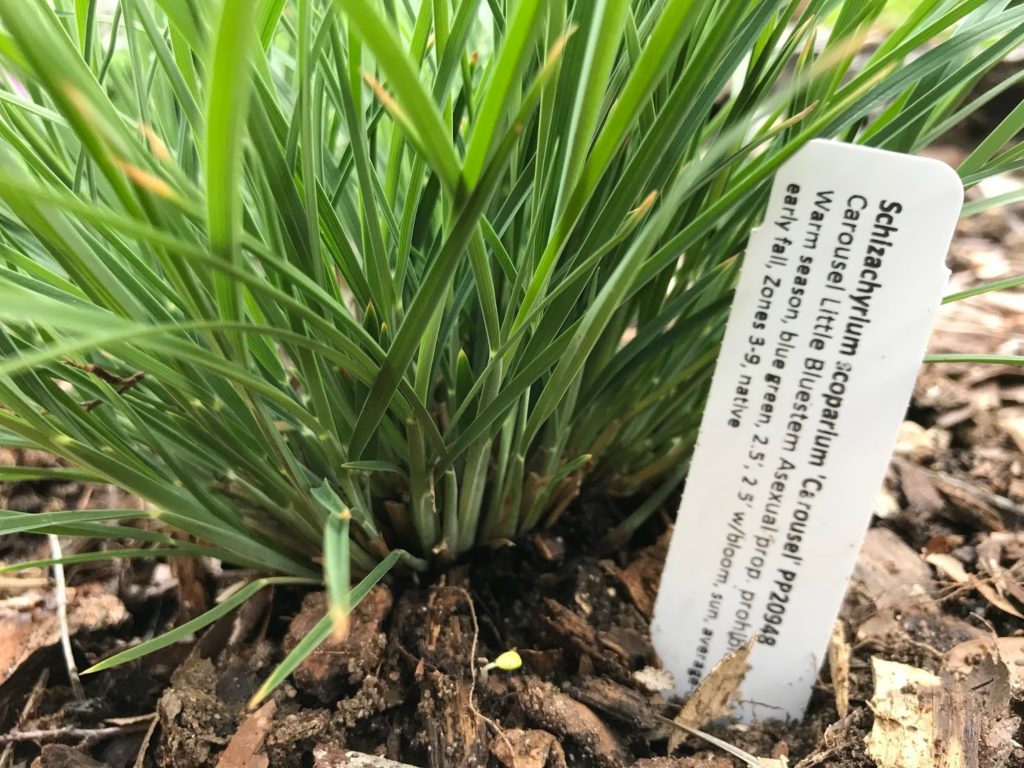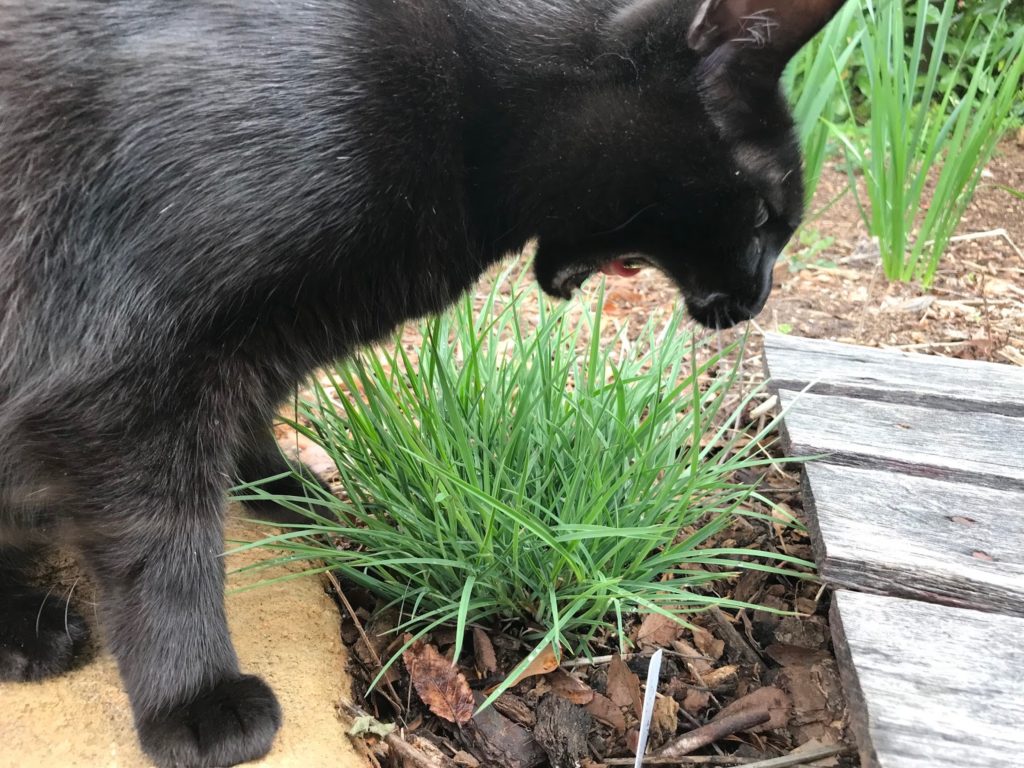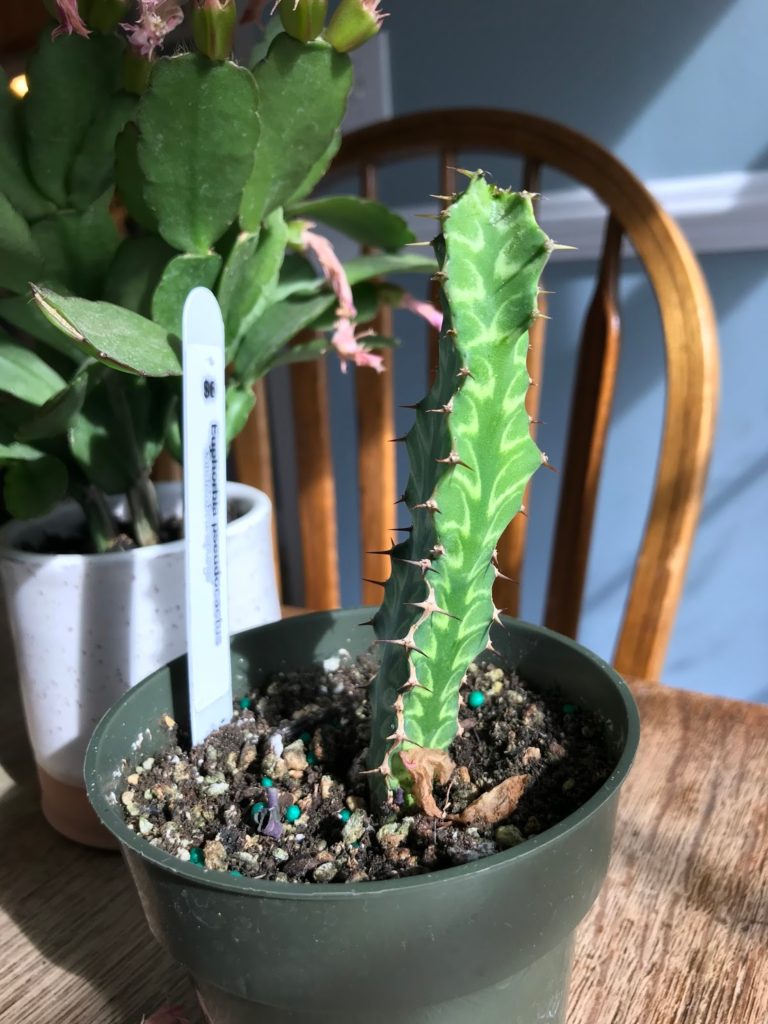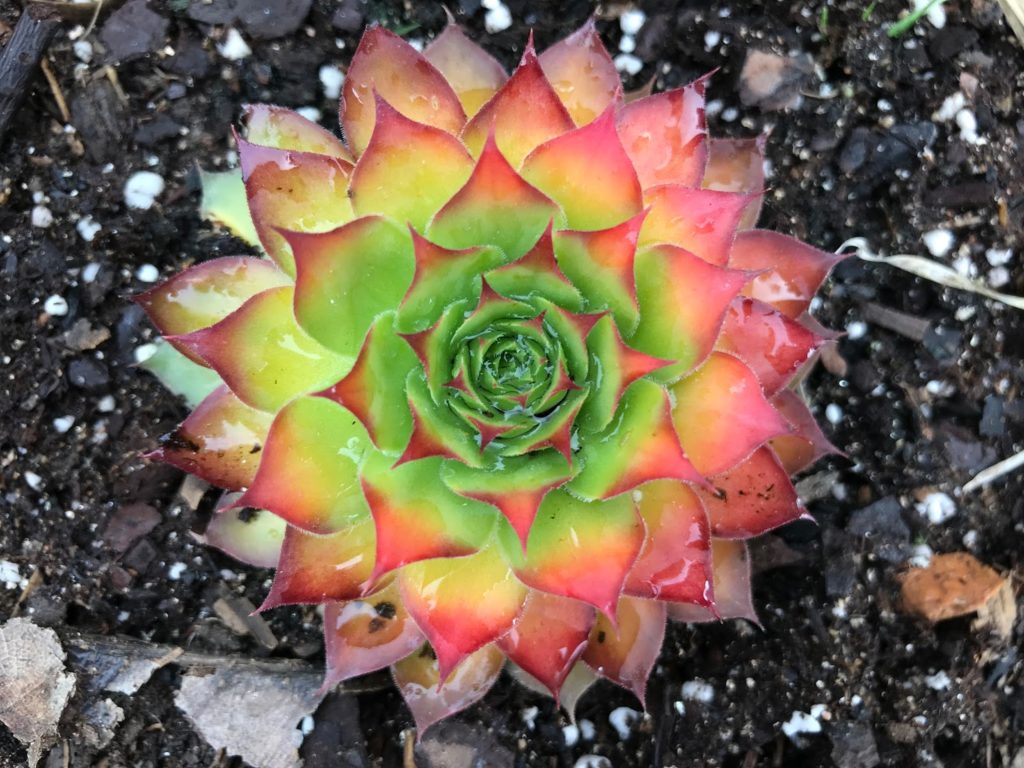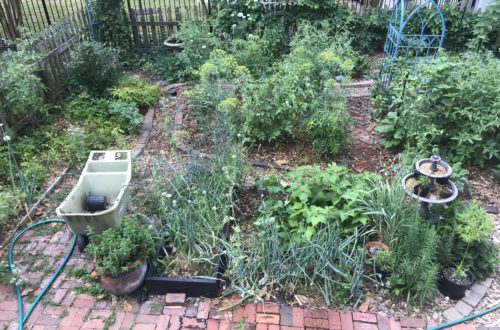My oldest and I went to the NC State Pi Alpha Xi plant sale at the NC Museum of Art Saturday morning. The plant list was shared earlier in the week, and I looked up all the native plants and boxed the ones I hoped to pick up. Without going to a specialty nursery, it can be difficult to find native plants, so this sale is a goldmine in that there are plenty plants clearly marked as native (and many are pollinator friendly), and there are expert students ready to answer questions about specific plants. One student saw me carrying yellowroot and was downright giddy with excitement. It seems that some beloved woody natives are not always the most prized in the garden and tend to get overlooked at the sale. Another student evaluated our haul and declared that we had excellent taste in plants.
My son picked out the three non-natives, including an indoor cactus for his room, and the native red honeysuckle. The honeysuckle was actually the most expensive plant in our wagon, and he was resolute that we were going home with it. I was talking with friends and he came walking over with a huge pot in his hands and informed me that he picked it out and we were going to get it. Well, okay then. It actually warmed my heart to see he valued a plant enough that he didn’t want to argue about it anymore and was putting his foot down. I may have two future gardeners after all.
I was able to get it all planted in the afternoon with only one plant possibly needing to be moved into more shade. Here’s the list of what we purchased along with some of NC State Extension’s notes on the site requirements in italics.
Natives:
Carpinus caroliniana – hornbeam
“The American Hornbeam grows best in average, medium moisture soil in part shade to full shade. It prefers moist, organically rich soils.”
Xanthorhiza simplicissima – yellowroot
Sun to partial shade; prefers moist, well-drained soil but tolerates heavy soil.
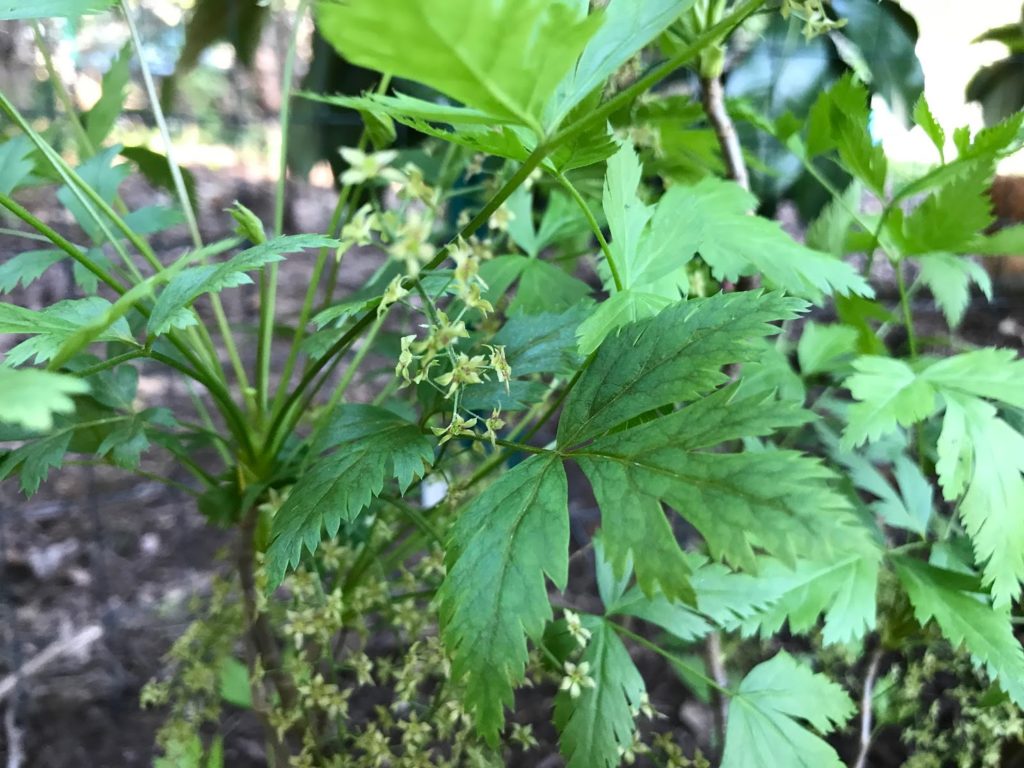
Euonymus americanus – strawberry bush
Partial shade; tolerates moist soil. A low maintenance deciduous shrub native to the southeastern US in the Celastraceae family. It has attractive yellow-green fall foliage and striking green stems in winter. Euonymus americanus has an open, airy habit that is sprawling when young but more erect as the plant matures. Fertilize it lightly as too much can burn the foliage. It can be grown on clay soils and is drought tolerant but also tolerates wet soils. Tolerates being planted near black walnut trees.
Hamamelis virginia – witch hazel
Sun to shade; moist well drained soil. Yellow to orange brown fall foliage; crooked, usually multi-trunked with low branching; avoid extremely dry sites; native; most cold hardy of all witch hazels; roots are sensitive to disturbance; good for natural areas, woodland gardens, or shrub boards. It is one of the latest shrubs to bloom, often in November. It is resistant to erosion and performs well in clay soils.
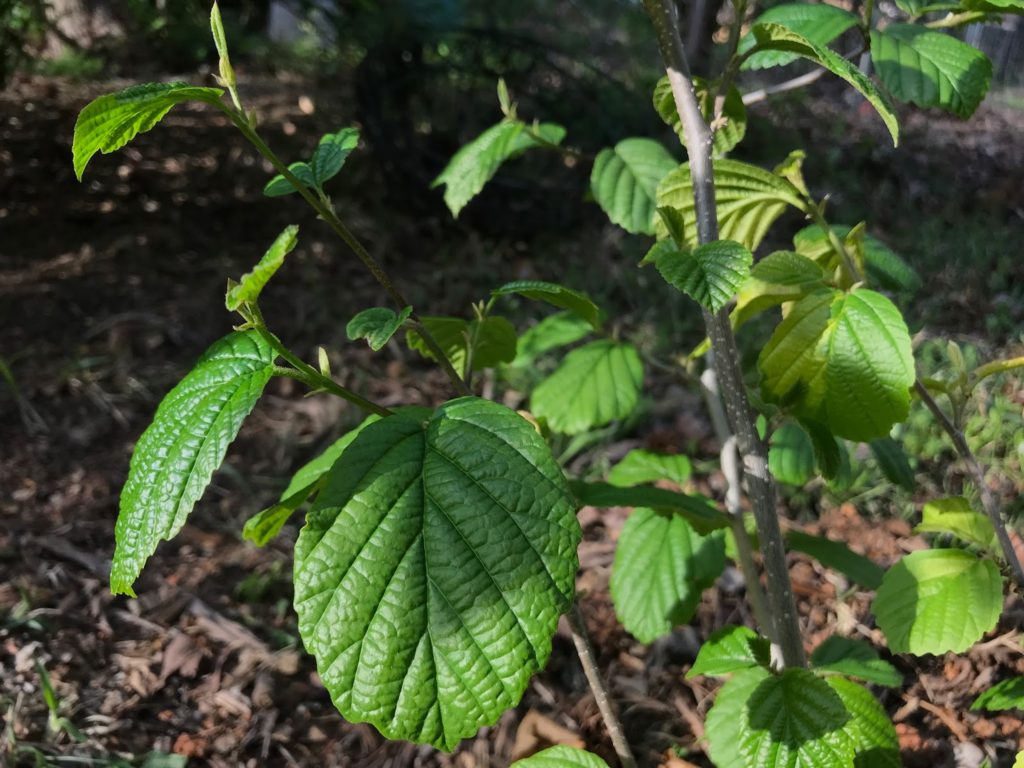
Lonicera sermpervirens ‘Cedar Lane’ – honeysuckle
Sun to partial shade. Excellent for natural, low-maintenance areas. Larva food for spring azure butterflies; flowers attracts hummingbirds, bees and butterflies; fruit eaten by birds; rapid grower. Prefers moist soil but is drought tolerant; noninvasive; high nitrogen fertilizer will produce foliage at the expense of flowers; flowers on new growth; this plant is resistant to damage by deer.
Mondara citriodora – lemon beebalm
Mondara fistulosa – wild bergamot
full sun, partial shade. dry rocky soil.This clump-forming member of the mint family (square stems) reaches a height of 2-4 feet. Leaves are 4-inch long, toothed, oblong and gray-green. They are very fragrant and can be used for tea. Tubular flowers appear to top stems in globular formation. They are attractive to hummingbirds and butterflies and also makes a good cut flower. Deadhead flowers to prolong summer blooming. Will easily reseed. Does well in a naturalized area or rain garden.
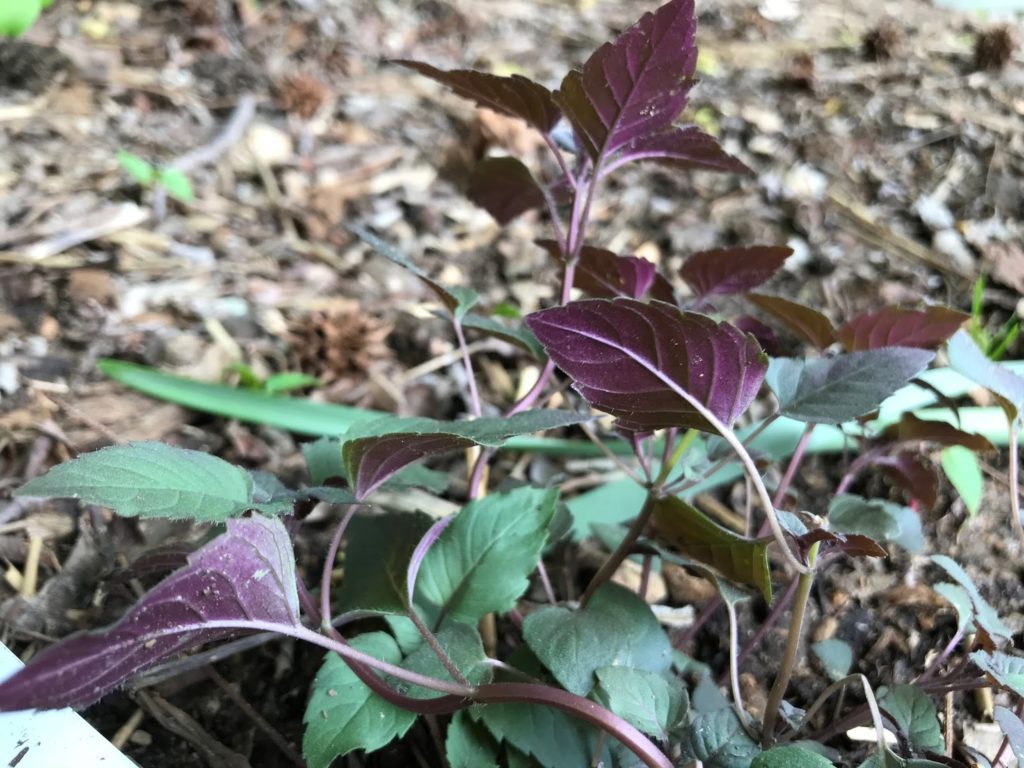
Schizachyrium scoparium – little blue stem
Tiarella ‘Candy Striper’ – foamflower
Non-natives:
Santolina chamaecyparissus – cotton lavender
Sun, needs good drainage. Good in small areas; good drought tolerance. Dried arrangement, potpourris; accent plant.Drought and salt spray tolerant; avoid excess fertilization; prune after flowering.
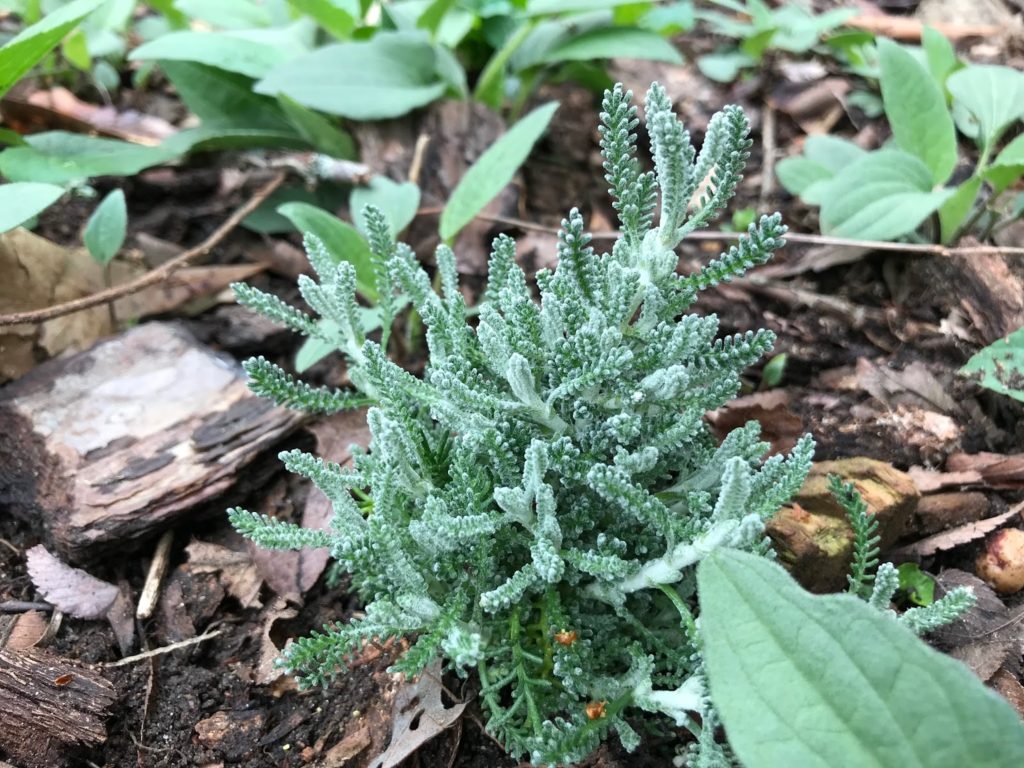
Euphorbia pseudocactus – candelabra spurge
Sempervivum ‘gold nugget’ – hen and chicks



